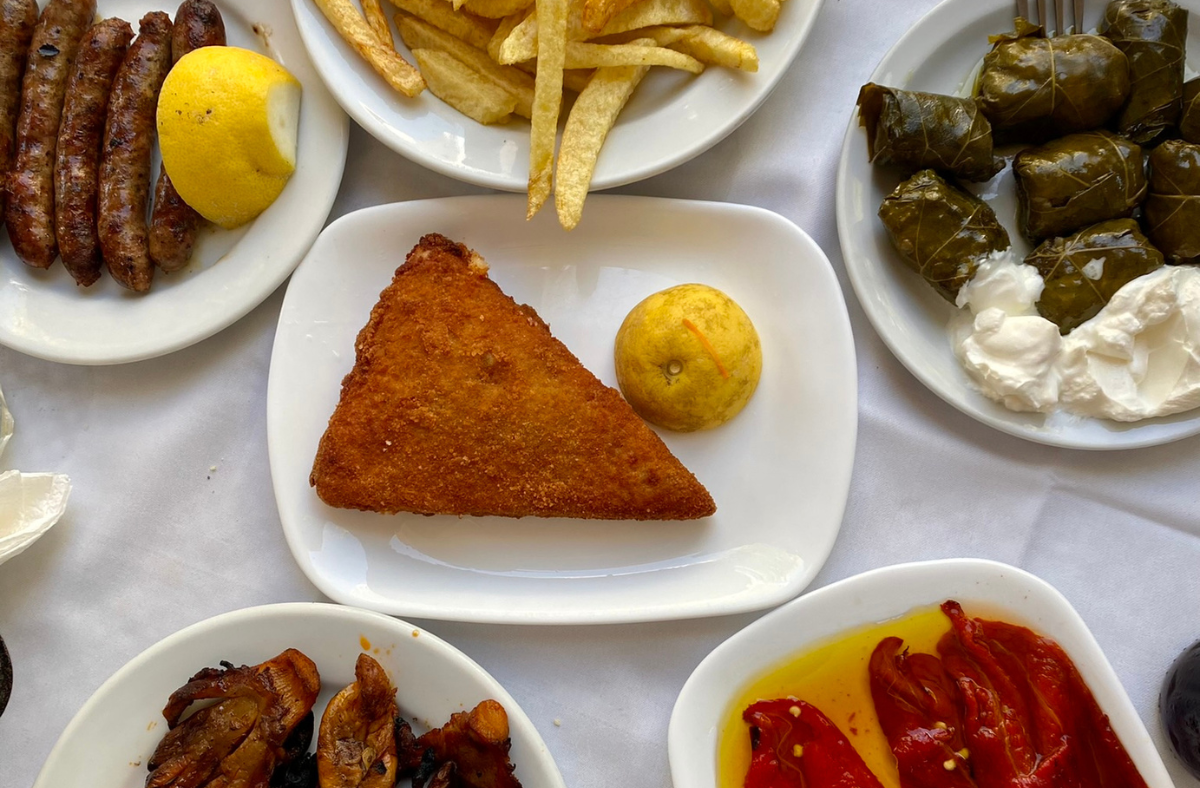You’re about to discover the absolute heart and soul of Cretan cuisine through its most beloved Greek mezedes – those irresistible small plates that locals have perfected over generations. While you’ve probably heard of Greek favorites like souvlaki and moussaka, Crete’s distinctive appetizers tell a deeper story of the island’s culinary heritage. From rustic farmhouse specialties to coastal delicacies, these shareable bites offer your first glimpse into what makes dining on Greece’s largest island truly unforgettable.
Introduction
When you step into a traditional Cretan taverna, you’ll quickly discover that Greek mezedes aren’t just appetizers – they’re the beating heart of the island’s dining culture. These small, shareable plates embody the essence of “parea,” the Greek concept of good company and shared experiences.
As you gather around a table laden with an array of dishes, you’ll find yourself participating in a time-honored tradition that dates back to ancient Persian influences. Whether you’re sipping ouzo or Cretan raki (tsikoudia) while nibbling on perfectly grilled octopus or spreading creamy fava on warm bread, you’re not just eating – you’re embracing the island’s cherished “philoxenia” (hospitality).
In Crete, Greek mezedes transform ordinary meals into social celebrations where stories flow as freely as the local wine, and strangers often become friends over shared plates.
1. Dakos
Among the vibrant spread of Greek mezedes, Dakos stands as a brilliant example of Crete’s “less is more” culinary philosophy. You’ll find this rustic dish lovingly crafted with barley rusks that are gently moistened, then crowned with freshly grated tomatoes and creamy myzithra cheese, all brought together with a generous drizzle of Crete’s liquid gold – extra virgin olive oil.
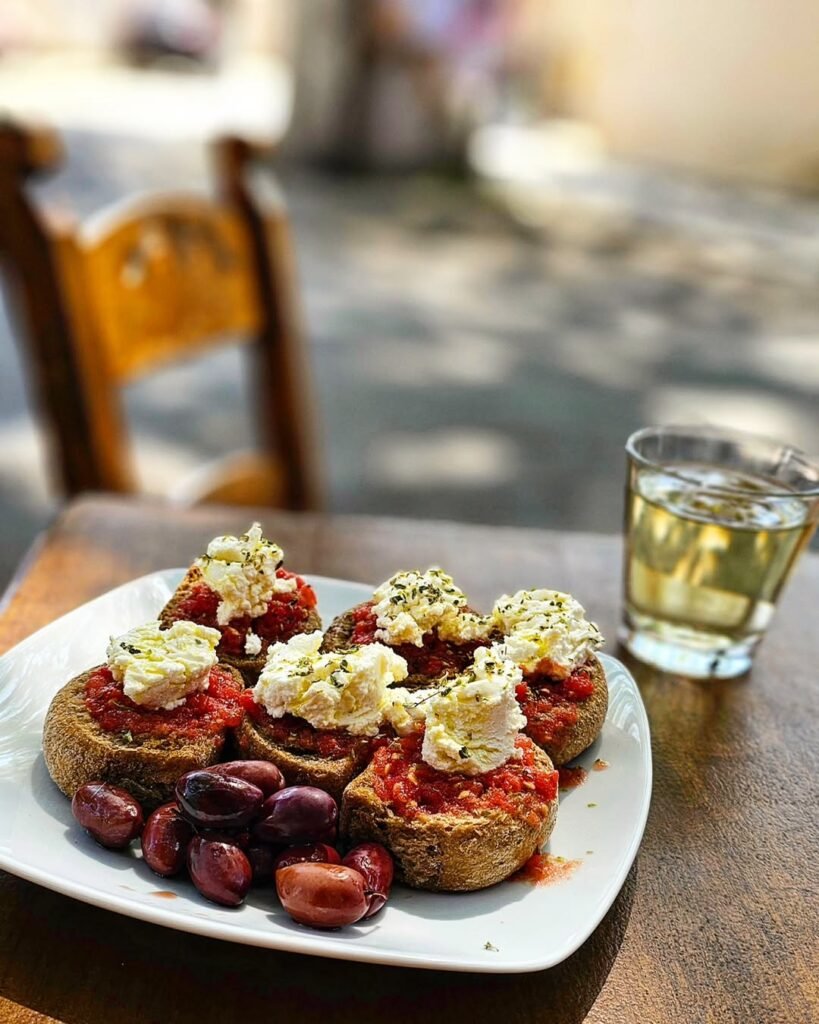
Known as “koukouvagia” (owl) in some parts and “kouloukopsomo” (puppy bread) in eastern Crete, this invigorating meze is your perfect companion on a sweltering summer afternoon. What you’ll love most is the delightful contrast between the crunchy rusk base and the tender toppings, finished with a sprinkle of oregano, salt, and pepper.
I’ve had dakos in tavernas all over the island, and trust me, each place adds their own special touch. Some use local tomato varieties that are sweeter than anything you’ve ever tasted, while others might surprise you with a sprinkle of capers or olives. It’s always a good sign when you see locals enjoying this classic Greek meze – they know exactly where to find the best version!
2. Kolokithokeftedes (Zucchini Balls)
Three bites into these crispy, golden zucchini balls, and you’ll understand why Kolokithokeftedes have earned their place as a cherished Greek meze in Cretan taverns. You’ll find these delightful fritters combining the best of summer’s bounty: freshly grated zucchini mixed with red onions, scallions, and aromatic mint. The addition of crumbled feta cheese and fresh parsley creates a perfectly balanced flavor profile.
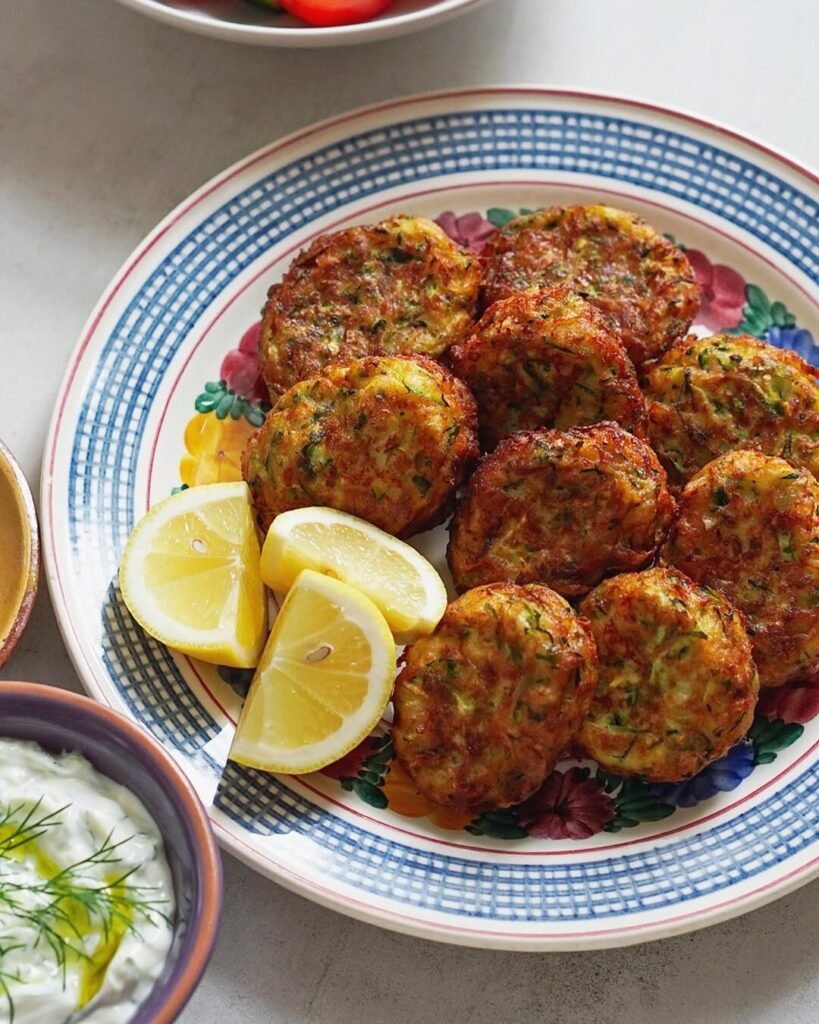
What makes these bites truly special is their contrasting textures – a satisfyingly crunchy exterior giving way to a creamy, tender center. They’re best enjoyed straight from the fryer, paired with a cooling tzatziki sauce for dipping. During summer months, when local gardens overflow with zucchini, you’ll spot these mouthwatering morsels on nearly every taverna table across the island.
I once watched a Cretan grandmother preparing these from scratch when I was exploring the south of Rethymno. She was squeezing every last drop of moisture from the grated zucchini – that’s their secret to the perfect crunch! If you’re visiting Crete in summer, don’t miss trying these at a family-run taverna where they make them fresh daily.
3. Stamnagathi (Horta – Wild Greens)
Scaling the rugged mountains of Crete, you’ll discover one of the island’s most treasured wild ingredients: stamnagathi. These spiny chicory greens, with their distinctive bitter taste, have been nourishing Cretans for generations. You’ll find them simply prepared – boiled until tender and dressed with local olive oil and a squeeze of fresh lemon juice. In restaurants, stamnagathi is often listed under the generic term “horta,” which encompasses a variety of wild greens.
While today you might spot stamnagathi on the menu of upscale tavernas, these humble greens tell a powerful story of survival. During World War II, locals relied on their knowledge of where to find these nutrient-rich plants when food was scarce. Packed with antioxidants, vitamins, and minerals, it’s no wonder these wild greens have contributed to the famous longevity of Cretan people.
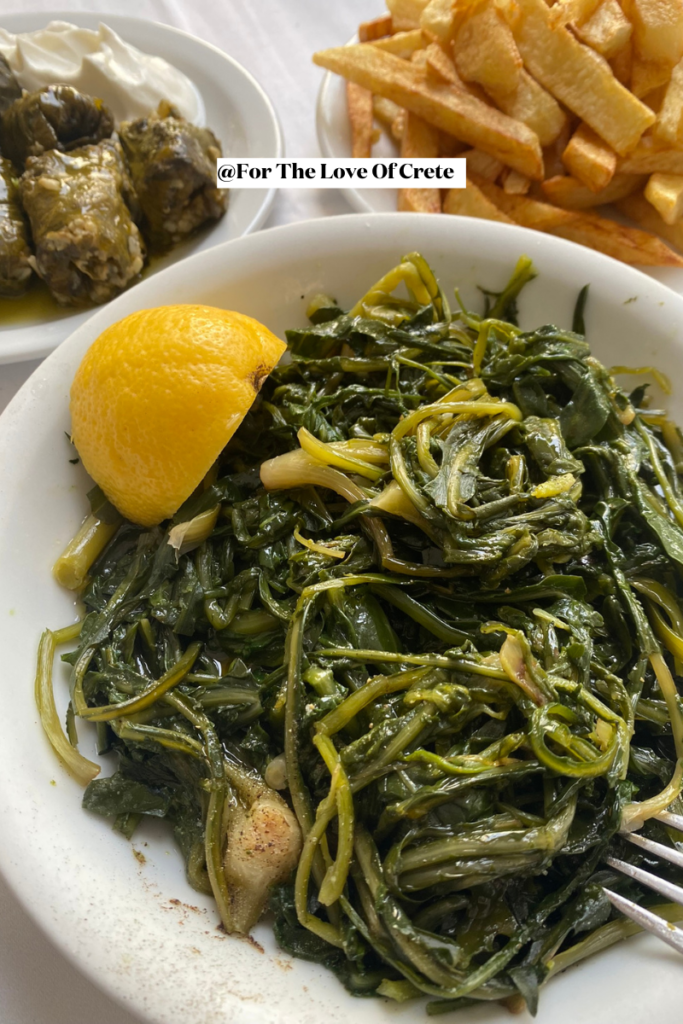
I fell in love with this Greek meze on my very first trip to Crete with my Greek boyfriend, Ioannis. As fellow herbalists, we were thrilled to explore the island’s unique plants and herbs. A friendly local pointed us to perfect foraging spots in the hills, where we gathered fresh stamnagathi. We brought our harvest back to our accommodation and prepared a simple but magnificent lunch. The greens paired beautifully with farm-fresh eggs and potatoes, all drizzled with olive oil from a Cretan farmer’s personal grove.
What’s amazing about stamnagathi is how versatile it is in Cretan cuisine. Beyond the simple preparation, you’ll find it enriching omelets where its slight bitterness balances perfectly with eggs and local cheese. Don’t miss trying “arni me stamnagathi,” a traditional lamb stew with a refreshing lemon sauce, or hortopita, the delicious wild greens pie. Don’t leave the island without trying this authentic taste of Cretan heritage!
4. Fava
A golden pool of velvety fava beckons from every authentic Cretan mezedes spread, though it’s not what you might expect. Unlike its Egyptian cousin made from fava beans, Cretan fava is crafted from yellow split peas, simmered slowly with onions and garlic until they surrender into a silky purée.

You’ll find this humble yet extraordinary dip gracing tables across the island, especially during religious fasting periods. Watch as locals transform it into a work of art, crowning it with capers, diced red onions, and a generous stream of their prized olive oil. Don’t hesitate to scoop it up with warm bread or traditional barley rusks.
The first time I tried this Greek meze in Crete, a taverna owner explained how each family has their own special technique – some add a touch of cumin, others swear by a hint of rosemary. Some even serve it with finely chopped tomatoes, adding a fresh dimension to the creamy texture. What amazed me was how such simple ingredients could create something so deeply satisfying. It’s a dish that’s sustained Cretans since ancient times, proving that the simplest ingredients often make the most memorable meals.
5. Cretan Cheeses
Cretan cheeses deserve an article of their own, let’s face it, but I couldn’t write an article about Greek mezedes and not give them a mention. Deep in the mountains of Crete, where shepherds still guide their flocks through herb-scented paths, you’ll discover some of Greece’s most cherished cheese-making traditions. Each village proudly crafts its own signature varieties, mainly from sheep’s and goat’s milk that carries the distinct flavors of wild mountain herbs.

You won’t want to miss trying Cretan graviera, a hard cheese that starts sweet and develops nutty complexity with age. For something uniquely local, seek out Pichtogalo Chanion, a creamy Protected Designation of Origin cheese from the western region. The versatile myzithra, a fresh whey cheese, works beautifully in both savory dishes and sweet treats.
During one of my stays in Crete, it was fascinating to hear an elderly cheesemaker explain that the secret to their exceptional Greek mezedes platters wasn’t just the cheese itself but knowing exactly when to serve each variety. Some are best enjoyed young and fresh, while others need months of careful aging in those cool mountain caves. What makes these cheeses truly special is their connection to tradition – many producers still age their cheeses in mountain caves, just as their ancestors have done for centuries.
6. Taramosalata
From the pristine waters of the Mediterranean comes taramosalata, a luxuriously creamy fish roe spread that’s become an essential part of Cretan meze culture.
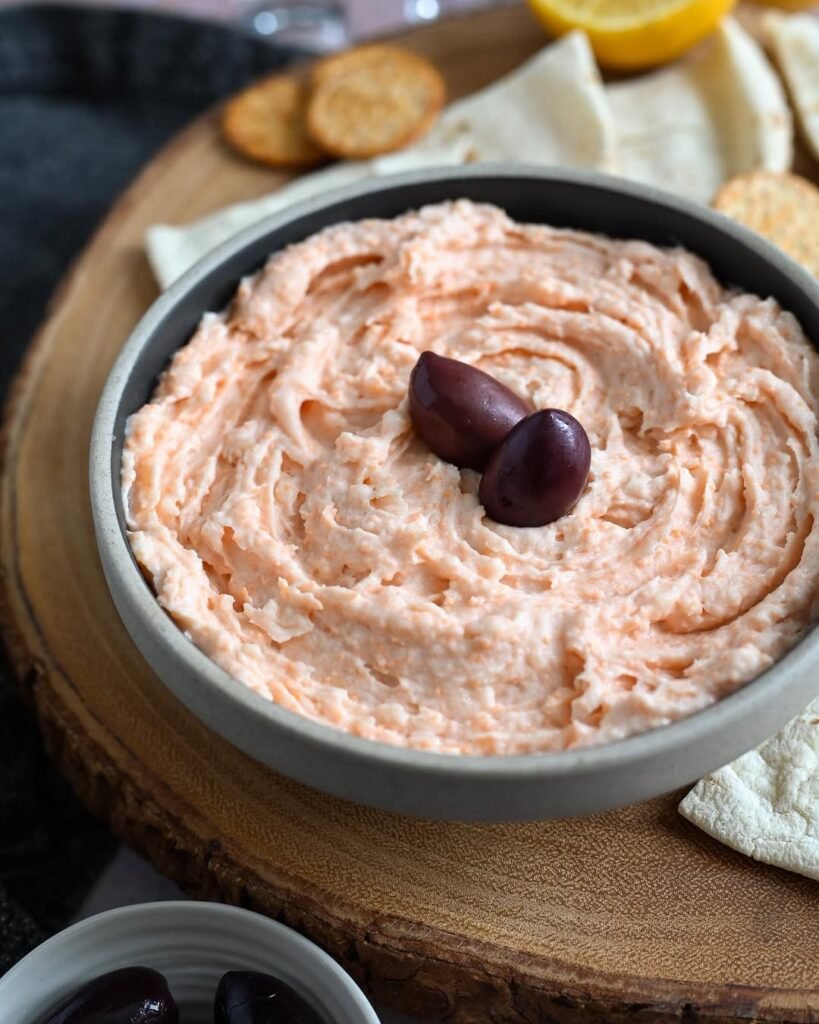
You’ll find this pink-hued delicacy crafted from cod or carp roe, expertly blended with olive oil, lemon juice, and sometimes a hint of garlic. While some versions use soaked bread as a base, authentic taramosalata sometimes substitutes mashed potatoes instead. While you might’ve tried commercial versions elsewhere, Crete’s traditional taramosalata packs a more intense, authentic punch. For the best experience, head to the family-run tavernas near fishing harbors, where they prepare it with fresh local roe.
A fisherman’s wife in a tiny coastal village once explained that their version uses much less filler than commercial varieties, letting the sea-fresh flavor of the roe shine through. Don’t miss trying it during Clean Monday (Kathara Deftera), when it’s traditionally served as part of the Lenten feast. And here’s a local tip: if you’re exploring coastal Cretan villages, each area’s version might taste slightly different, reflecting their unique fishing heritage.
7. Octopus
Tender grilled octopus stands as one of Crete’s most beloved coastal treasures, with a preparation method that’s remained virtually unchanged since Minoan times. You’ll find this delicacy in seaside tavernas, where chefs still practice the art of tenderizing – though they’ve wisely traded rocky shorelines for modern freezing techniques.
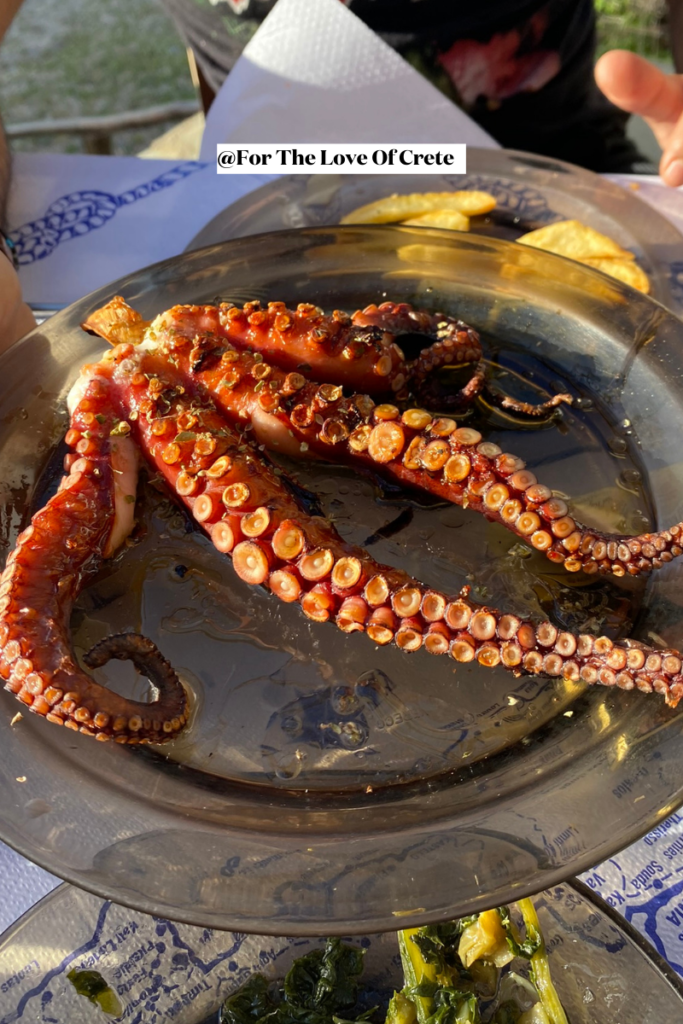
The magic happens when the octopus hits the charcoal grill after a slow simmer. That’s when it develops its signature smoky flavor and caramelized exterior. Don’t be surprised if you spot octopuses hanging to dry in the sun as you stroll through fishing villages – it’s an age-old preservation technique that intensifies their taste.
The process of preparing this Greek meze requires such care and precision. It’s like a meditation – they know exactly how long to simmer, when to turn on the grill, and that final moment when it’s reached perfection. For the most authentic experience, seek out small harbor-side tavernas where they’ll serve your octopus simply: drizzled with local olive oil, a squeeze of lemon, and, although rarely, a sprinkle of oregano.
8. Gamopilafo
Moving from seafood to one of Crete’s most cherished celebration dishes, gamopilafo stands as a symbol of the island’s rich culinary heritage. Though traditionally served at weddings (hence its name, meaning “wedding rice”), you’ll now find smaller portions of this luxurious dish in authentic tavernas’ Greek mezedes selections.

You’re in for a treat when you taste this creamy, risotto-like rice that’s cooked in goat or lamb broth. What makes it truly special is the stakovoutiro, a tangy sheep’s milk butter that’s distinctly Cretan. The silky texture combined with the rich, savory flavor creates an unforgettable bite that tells the story of countless Cretan celebrations.
If you’re lucky enough to try a mountain village version of gamopilafo, you might be sampling a recipe that’s been passed down through generations. It’s a rare chance to experience a genuine taste of Cretan celebration food that most visitors never get to discover.
Tip: Whenever I’m in Crete, I always make sure to buy a few jars of stakovoutiro to take home with me. I highly recommend it – you simply can’t find anything close to it elsewhere, and it adds such a rich texture to dishes, including the delicious staka me avga (eggs with stakovoutiro).
9. Apaki
A smoky aroma wafts through Cretan tavernas when apaki makes its appearance on the meze table. This uniquely Cretan delicacy showcases smoked pork tenderloin in its purest form, letting its complex flavors take center stage without any distracting side dishes.
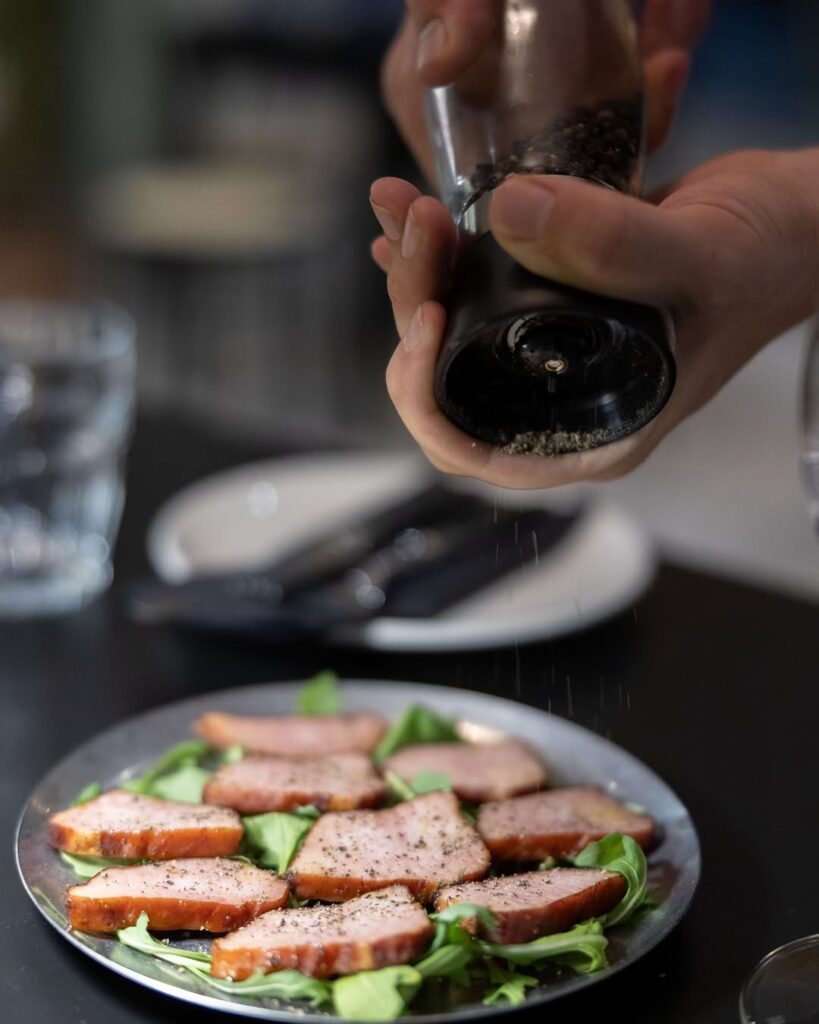
The fat-free pork is first marinated in vinegar, then lovingly seasoned with local herbs and spices before being smoked over aromatic woods. While it started as a practical preservation method during winter pig slaughters, it’s now a beloved Greek meze that you’ll find served paper-thin alongside a glass of tsikoudia (Cretan raki) throughout the island.
10. Chochlioi Bourbouristi (Fried Snails)
While many visitors to Crete might hesitate at the thought of eating snails, Chochlioi Bourbouristi stands as one of the island’s most cherished and distinctive Greek mezedes. You’ll find these delicacies collected from the countryside after rainfall, when they’re at their most abundant.
But how is this dish prepared? The snails are fried in hot olive oil with flour, rosemary, and vinegar, creating a delightful contrast of crispy exterior and tender inside. Listen carefully when they hit the hot oil – you’ll hear the distinctive “bourbour” popping sound that gives the dish its name.
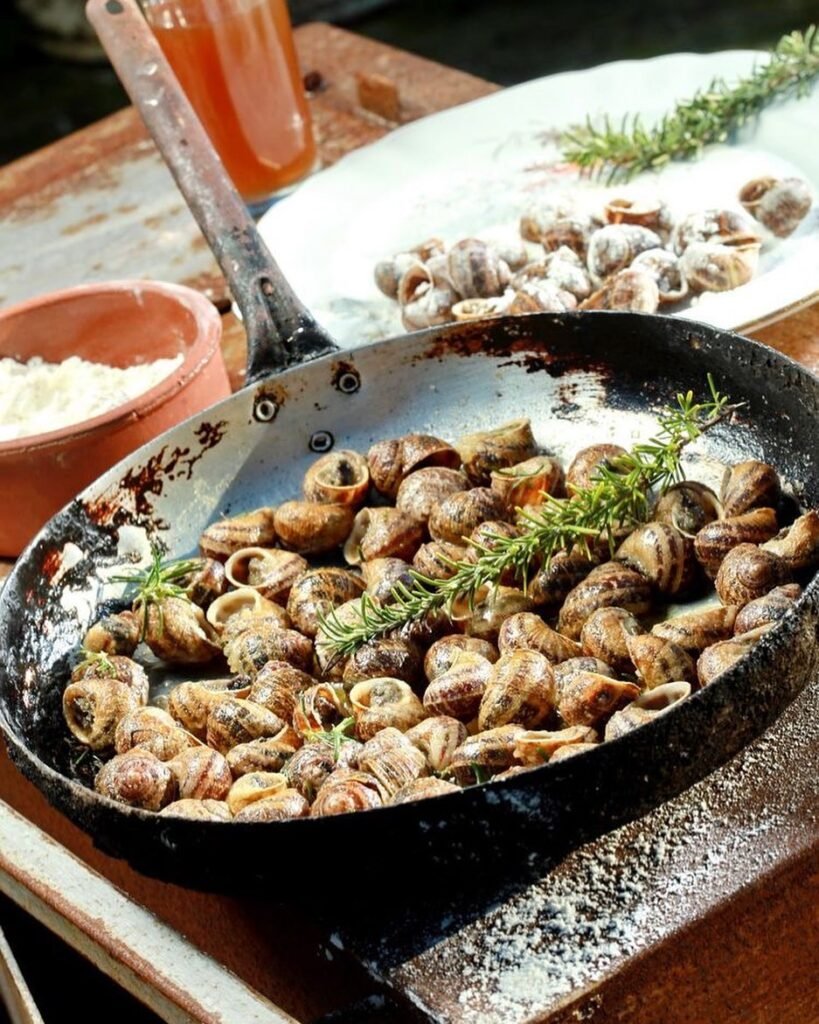
Having been raised in Malta, I have vivid memories of my late grandpa coming home with freshly collected snails that my grandmother would transform into a similar dish with so much love and care. As a child, I always viewed these strange creatures as too exotic for my palate and never worked up the courage to try them. Finding this dish so popular in Crete shouldn’t have surprised me, given the Mediterranean connection!
I have to confess – this is the only Greek meze on this list I haven’t personally tried yet. I hope you’re braver than I am! Friends who’ve sampled this Cretan delicacy tell me the rosemary and vinegar combination creates something truly unique – completely different from the garlic-butter French escargot you might be familiar with.
11. Hand-cut Fried Potatoes (Patates Tiganites)
Despite their humble origins, Cretan hand-cut fried potatoes have earned their place as an essential Greek meze that you’ll find on virtually every taverna table across the island. Unlike the uniform frozen fries you might encounter at tourist spots, these irregularly-shaped beauties are prepared the traditional way – freshly peeled, hand-cut, and soaked in cold water to remove excess starch.
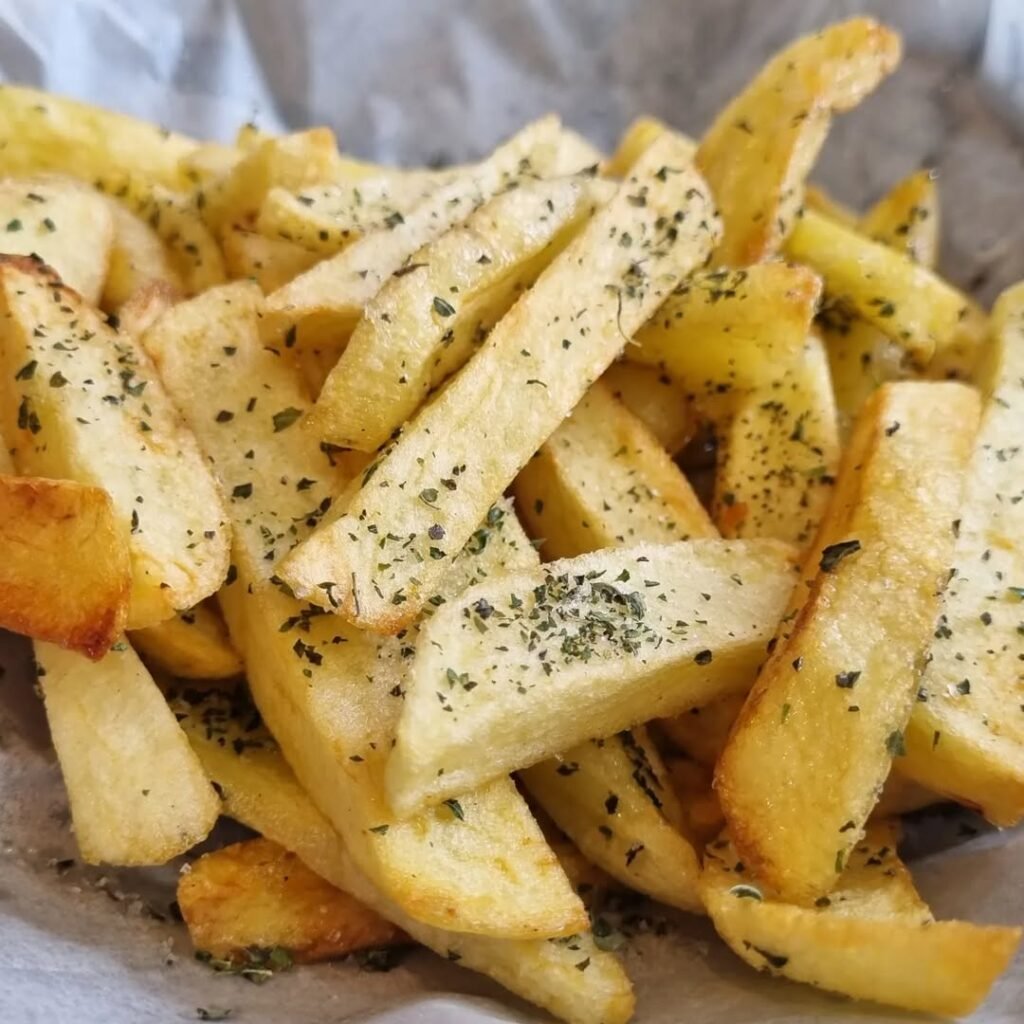
You’ll discover two distinct styles as you explore local tavernas: thick-cut versions offering fluffy interiors (my personal favorite!), and thinner ones maximizing crispiness. What makes them truly special is the simple seasoning of sea salt and dried oregano, applied while they’re still sizzling from their olive oil bath. Yes, unlike most other countries where vegetable oil is the standard, Cretans proudly fry their potatoes in olive oil, adding that distinctive Mediterranean richness you just can’t replicate any other way.
Tip: In mountain villages, look for the prized “country fried” variety, where whole-baked potatoes are chunked and quickly fried for an irresistible contrast of textures.
12. Village Sausages (Loukanika Horiatika)
Moving from the beloved patates to another cherished taverna favorite, traditional Cretan village sausages showcase the island’s masterful approach to charcuterie.
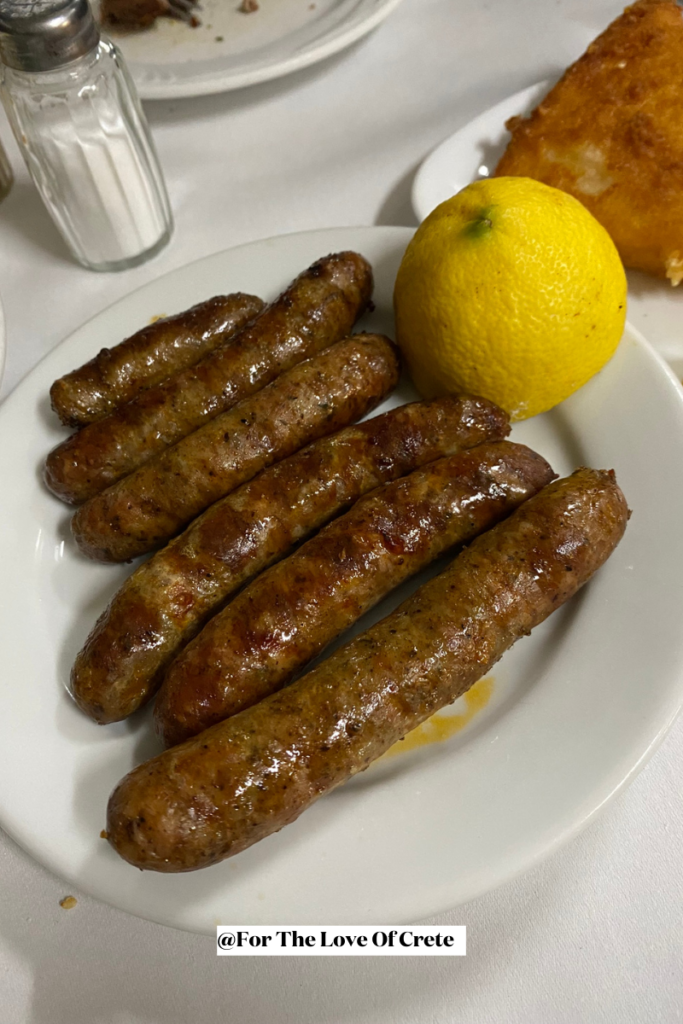
You’ll find these handmade treasures in every authentic taverna, each boasting its own closely guarded recipe that’s been carefully preserved within family kitchens for centuries. The magic lies in their distinctive seasoning – a blend that might include oregano, thyme, fennel seeds, leeks, and sometimes surprising touches of cinnamon or orange zest.
The ritual of preparing village sausages is practically ceremonial – mixing the spices, filling the casings, and hanging them to cure in a special room where the mountain air circulates just right. While most are made from pork, mountain villages occasionally use goat or lamb, smoking them over aromatic local woods for extra depth. They’re best enjoyed hot off the charcoal grill, slightly charred outside but juicy within, with a simple squeeze of lemon. Don’t hesitate to ask about each taverna’s unique spice blend – they’ll be proud to share their story (although they might conveniently forget to mention a secret ingredient or two to keep the family recipe truly their own 😉 ).
13. Melitzanosalata (Eggplant Dip)
The smoky aroma of charred eggplant wafting from Cretan tavernas signals one of the island’s most beloved dips – melitzanosalata. You’ll find this velvety smooth creation begins with whole eggplants grilled over open flames until their skin blackens and their flesh turns deliciously tender.
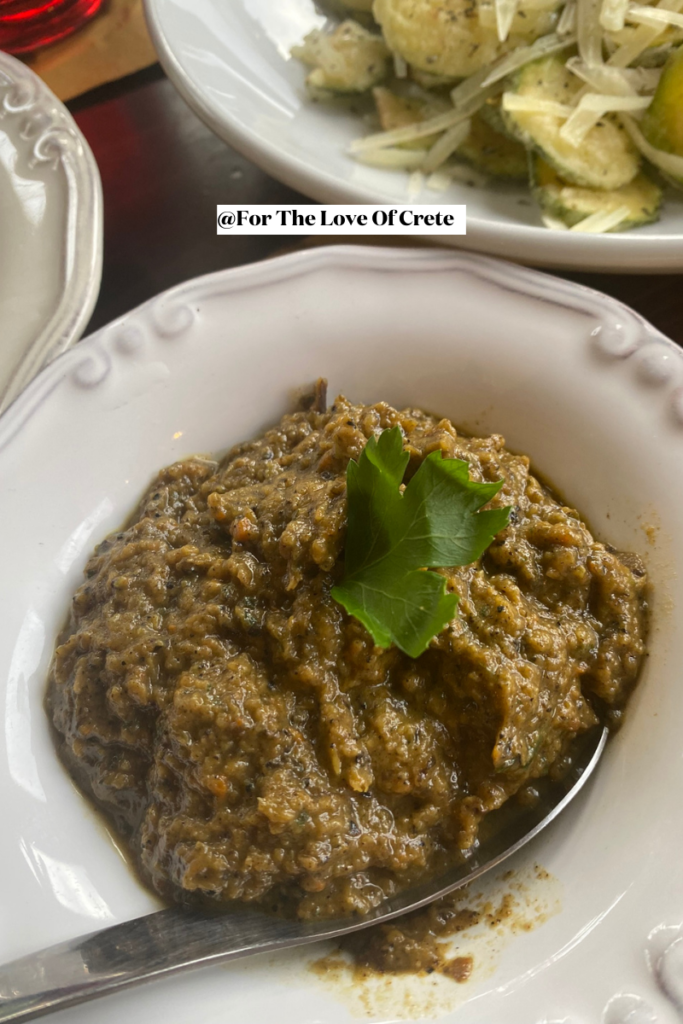
Once cooled, the smoky flesh is mixed with garlic, fresh lemon juice, and generous drizzles of Crete’s liquid gold – their exceptional olive oil. What makes the local version unique is the addition of aromatic herbs like fresh mint or wild thyme, and sometimes a dollop of yogurt for extra creaminess.
Cretans generally insist that the eggplants must be cooked over real wood fire – no shortcuts! Each region has its own variation, reflecting local tastes and available ingredients. In coastal tavernas, you might even encounter versions featuring fish roe, while mountain variations often include crushed walnuts for texture. Paired with warm bread or barley rusks, it’s a perfect introduction to Cretan vegetable mastery.
Tip: The best melitzanosalata I ever tried while in Crete was at Παραδοσιακή Ταβέρνα Γουλές (Paradosiaki Taverna Goules) in the region of Rethymno. Their version had the perfect balance of smokiness and creaminess that I still dream about!
14. Stuffed Zucchini Flowers (Kolokythoanthoi)
Summer mornings in Crete bring one of the island’s most fleeting delicacies – delicate zucchini flowers that must be plucked before the Mediterranean sun reaches its peak. You’ll find these bright yellow blossoms transformed into one of Crete’s most cherished Greek mezedes, with a preparation style uniquely different from mainland Greece.
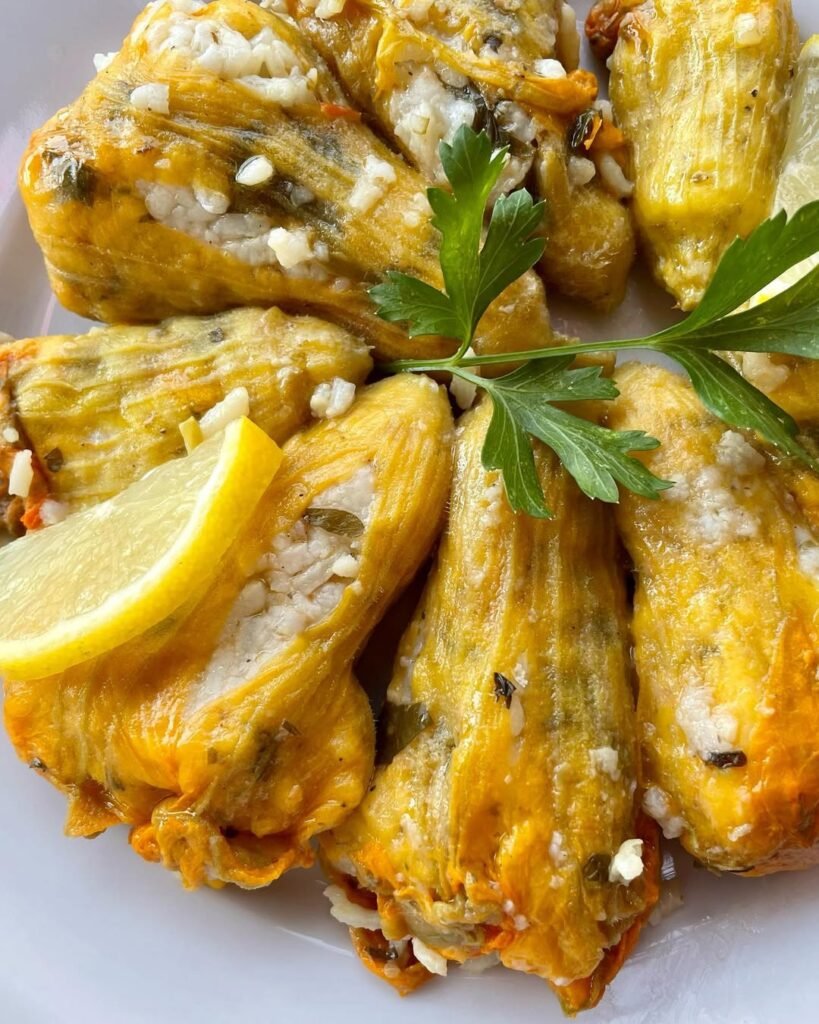
Unlike their cheese-heavy counterparts elsewhere, Cretan kolokythoanthoi feature a lighter, more aromatic filling. Local cooks stuff these ephemeral flowers with a fragrant mixture of rice, fresh herbs (think mint, dill, and parsley), grated tomatoes, and sometimes pine nuts. They’re then kissed with olive oil and gently baked until tender. While this rice-based filling is traditional in Crete, you’ll also find wonderful variations that include local cheese or even occasionally meat in more contemporary versions.
During my summer stays in Crete, I’ve noticed how these beautiful flowers create a sense of community. In small villages, neighbors share their abundant garden harvests – leaving baskets of freshly picked blossoms on doorsteps for friends and family. If you’re lucky enough to visit during summer, you’ll witness this beautiful community tradition where neighbors share their abundant flower harvest – it’s Cretan hospitality at its finest.
15. Marathopites
While zucchini flowers showcase Crete’s cultivated bounty, wild fennel pies known as marathopites celebrate the island’s untamed ingredients. You’ll find these delicate pies filled with a mixture of foraged wild fennel leaves, local greens, onions, and a touch of regional cheese, all wrapped in a simple dough made from flour, water, and olive oil.
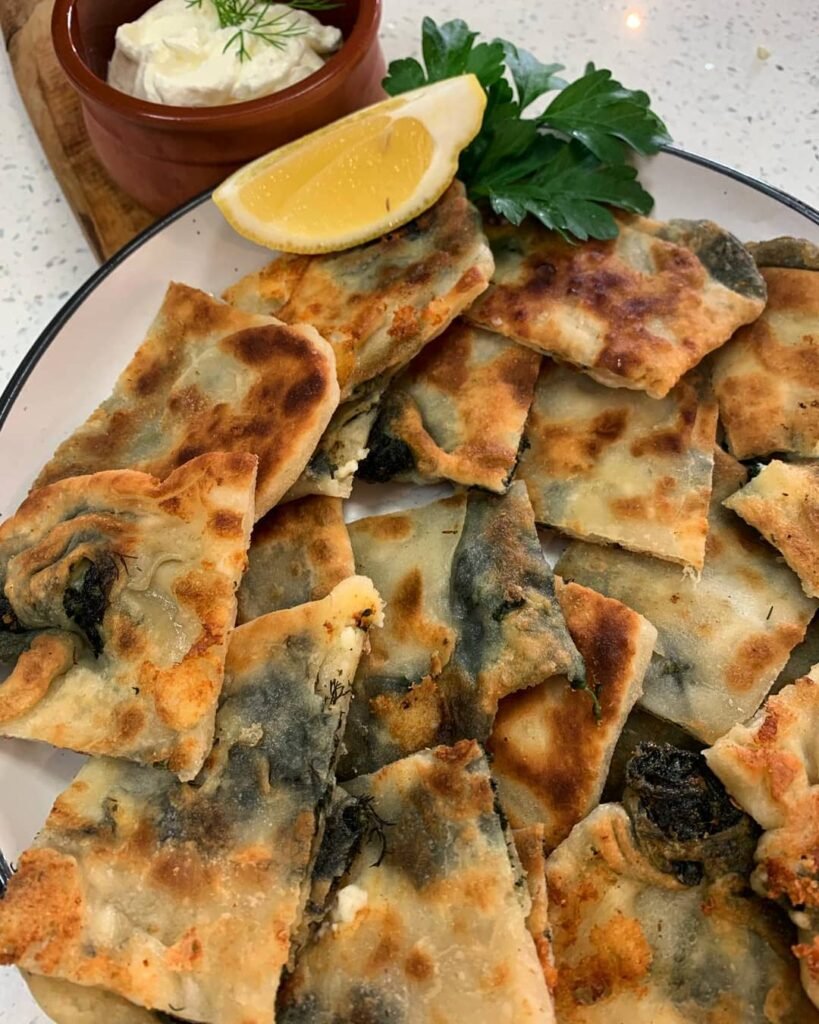
What makes these pies truly special is their deep connection to Cretan culture. They’re only available in spring when wild fennel blankets the countryside, and local families guard their secret foraging spots like treasured heirlooms. The wild fennel (Foeniculum vulgare) thrives in Crete’s sunny spots with well-drained soil – you’ll spot it growing along roadsides, in fields, and across hillsides from January through April.
When preparing marathopites, Cretan cooks coarsely chop the tender fennel fronds and mix them with other foraged greens, creating a unique flavor profile in each batch. Some families add a splash of raki to the dough for extra flavor before cooking the pies to golden perfection on a hot stone or pan. The distinctive anise-like aroma perfectly captures the essence of Cretan springtime, while the variety of other wild greens balances fennel’s potent character.
16. Dolmadakia
Masters of Mediterranean cuisine, Cretan cooks transform humble grape vine leaves into delicate dolmadakia – finger-sized parcels filled with aromatic rice and wild herbs. You’ll find these labor-intensive treats at local tavernas, where each leaf is carefully blanched, stuffed, and rolled into perfect little packages.
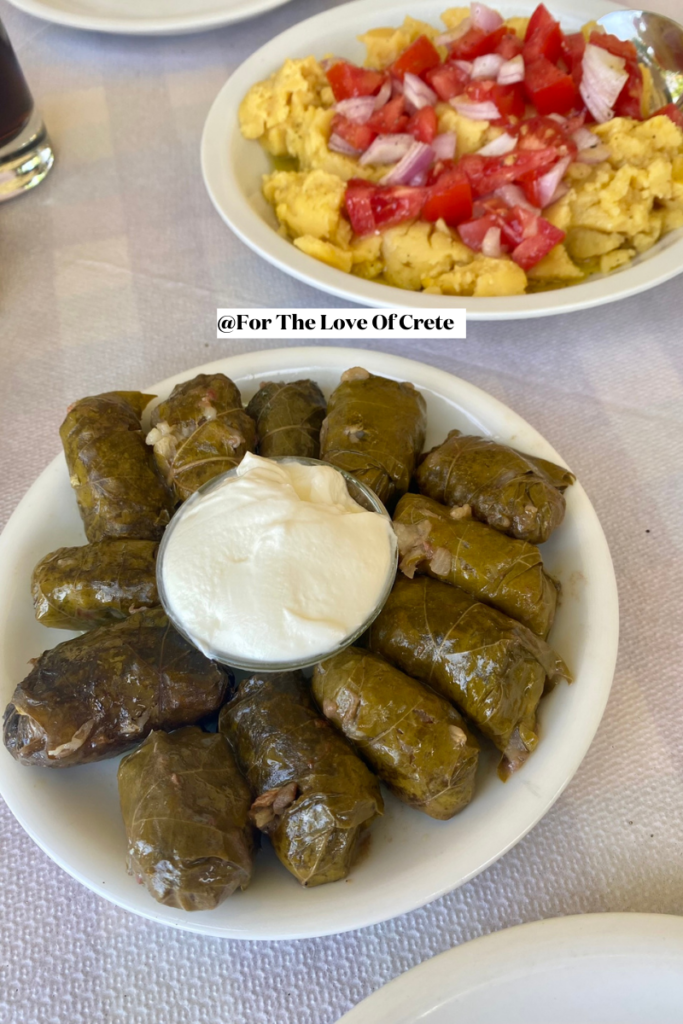
What makes Cretan dolmadakia special is the mountain-foraged herbs that locals add to the rice filling. While you might spot mint, dill, and parsley in the mix, it’s the wild aromatics that give these morsels their distinctive island character. They’re typically served at room temperature, and you won’t go wrong pairing them with a dollop of tzatziki or a squeeze of fresh lemon.
I’ve always been fascinated by how these Greek mezedes showcase the patience and precision of Greek cuisine. Watching locals prepare dolmadakia is like witnessing culinary artistry – the way they roll each leaf just tight enough to hold together during cooking but not so tight that the rice can’t expand.
Tip: If you enjoy these, keep an eye out for their winter cousin – lahanodolmades – where the same delicious filling is wrapped in tender cabbage leaves instead.
17. Kalamarakia Tiganita (Fried Calamari)
Along Crete’s sun-drenched coastline, you’ll discover kalamarakia tiganita – perfectly crispy calamari that showcases the island’s devotion to seafood simplicity. What makes this Greek meze special is its straightforward preparation: fresh squid lightly dusted with flour, sometimes enhanced with a touch of cornmeal, then quickly fried in oil until golden.
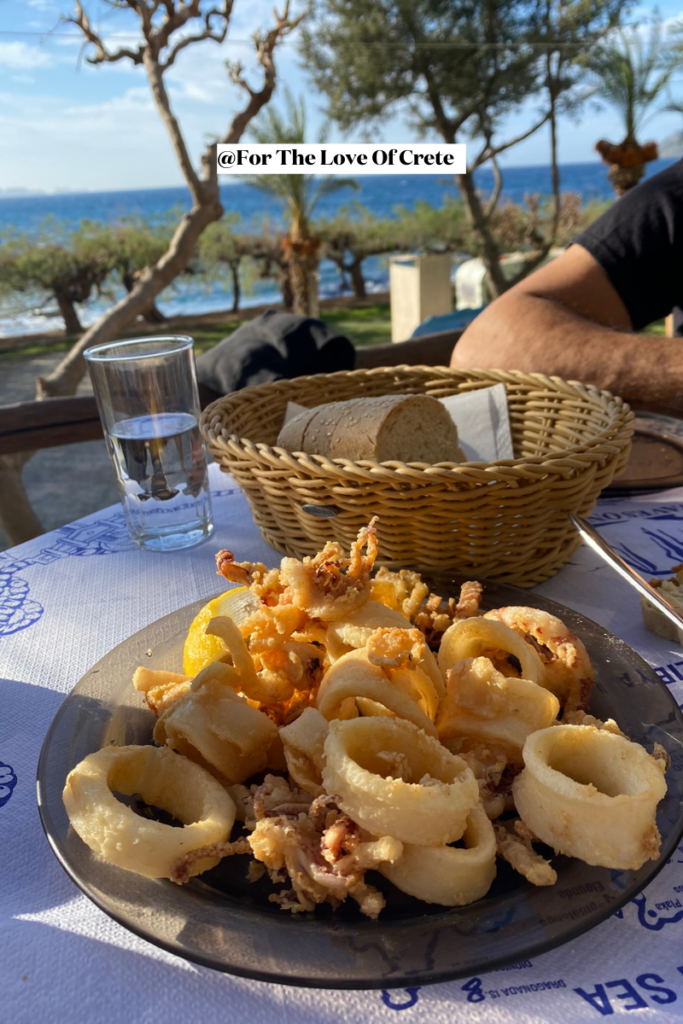
You’ll find the best versions in family-run tavernas where local fishermen deliver their catch directly to the kitchen. Don’t expect fancy garnishes – just a few lemon wedges on the side, though some places offer skordalia (garlic dip) for dipping. During religious fasting periods, especially before Easter, it’s a popular meat alternative.
I’ve found that the quality of calamari varies dramatically depending on where you go in Crete. The key difference is freshness – when it’s caught that morning and prepared with minimal interference, the natural sweetness of the squid shines through.
Tip: For the most authentic experience, seek out spots where they clean and prepare the calamari by hand rather than using frozen products. Don’t be afraid to ask your server if their seafood is fresh – Cretans are proud of their ingredients and will happily tell you about the day’s catch. It’s worth the extra effort to find a place that does it right!
18. Biftekia (Greek Meat Patties)
The humble biftekia holds a special place in Crete’s meze culture, where every taverna keeper claims their family recipe reigns supreme. While you could certainly order these as a main course, sharing multiple dishes with friends or family is the best way to experience Greek cuisine. You’ll find these aromatic meat patties are far more sophisticated than your average burger, thanks to a carefully crafted blend of fresh and dried herbs.
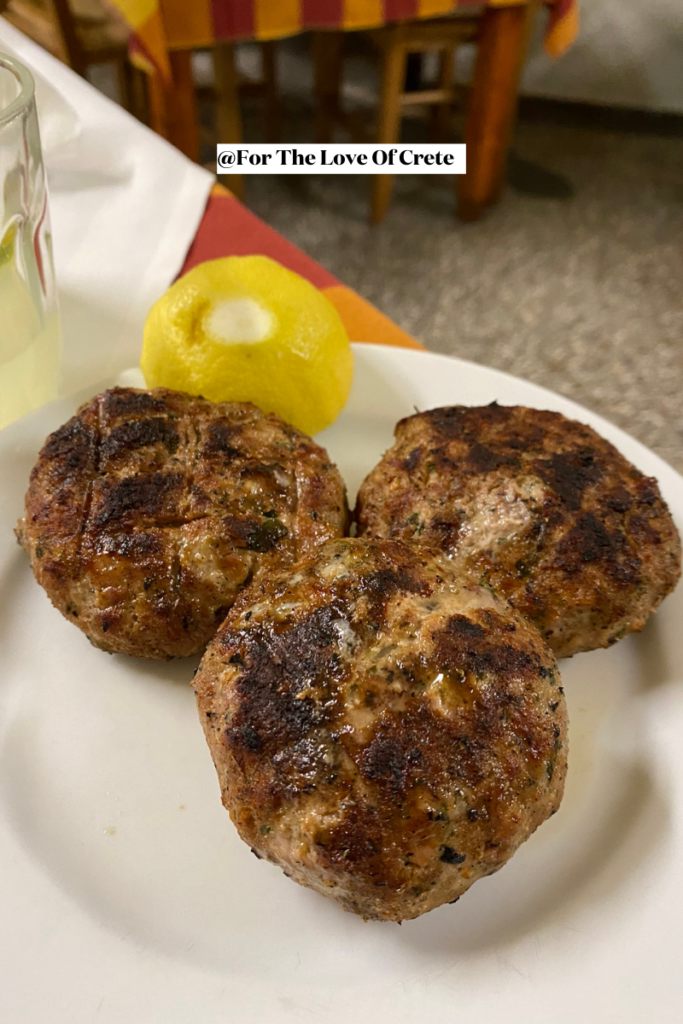
What makes these patties truly special is their tender texture, achieved by mixing ground beef and pork with soaked bread and aromatic ingredients like grated onion, garlic, mint, and oregano. If you’re lucky, you might stumble upon the stuffed version, “biftekia gemista,” where local cheese, tomatoes, and peppers hide inside the seasoned meat.
During my many visits to Crete, I’ve noticed that these Greek mezedes vary slightly from region to region – coastal areas might incorporate a hint of ouzo in the mix, while mountain villages often use more robust herbs.
Tip: The best biftekia I’ve ever had in Crete were at Ψητοπωλείο “Ο Αποκόρωνας” in Chania. It’s not a fancy place at all, but you’ll find it packed with locals (always the best sign of quality!). What makes it special is watching the chef grill everything right before your eyes. Don’t forget to squeeze fresh lemon over your patties – it’s the finishing touch that brings all those Mediterranean flavors to life.
19. Saganaki
Sizzling and theatrical, saganaki transforms humble Cretan cheese into a memorable Greek meze experience. You’ll find this dish served in a small, two-handled frying pan called a “saganaki” – the same name as the dish it produces.
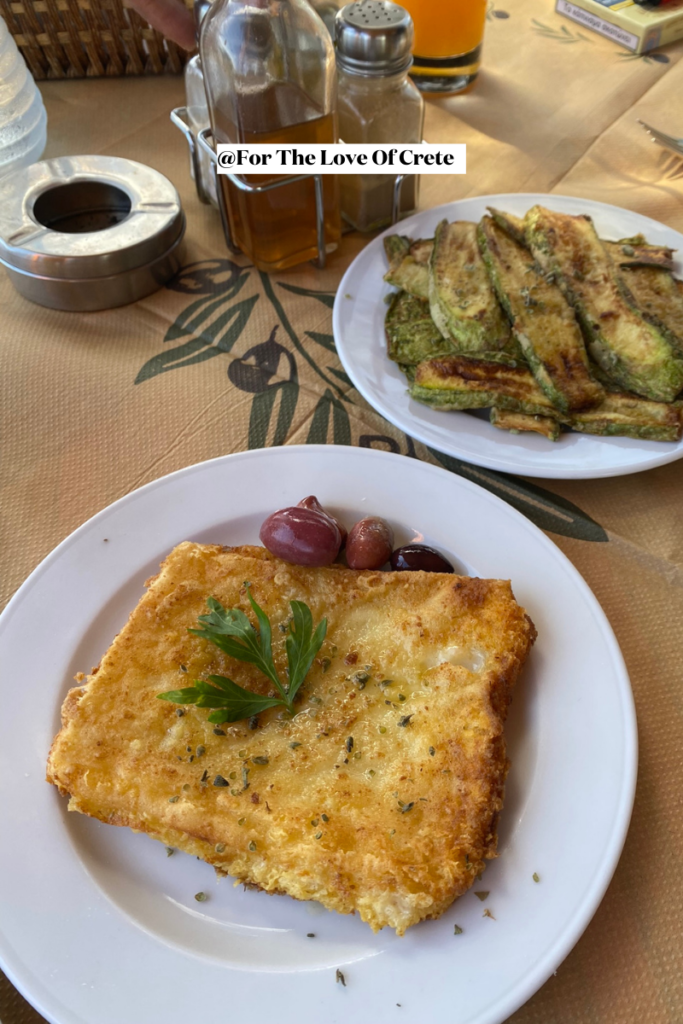
When you order this local favorite, you’ll watch as your server transforms Cretan cheeses like kefalotyri or graviera into golden, crispy-on-the-outside, molten-on-the-inside perfection. The magic happens when they dredge the cheese in flour and quickly fry it until it reaches that ideal texture.
Don’t miss the finale – a squeeze of fresh lemon juice that creates an impressive sizzle when it hits the hot pan. For extra drama, some tavernas will even flambé the dish with ouzo right at your table, creating quite the show. It’s one of those Greek mezedes that’s as much about the presentation as it is about the taste, though that gooey, salty cheese center is absolutely worth every bite!
Tip: The trick with saganaki is to eat it while it’s still hot, as the texture changes dramatically once it starts to cool down. In my experience, this is rarely a problem – whenever this dish lands on our table, it vanishes in no time. No chance for it to go cold!
20. Cretan Village Salad (A Twist on Horiatiki)
While traditional Greek salads hold a special place in Mediterranean cuisine, Crete’s unique village salad takes the concept to new heights by marrying classic Horiatiki elements with the island’s beloved Dakos. You’ll find crisp barley rusks scattered throughout like rustic croutons, creating a hearty element that’s distinctly Cretan. This could easily be a stand-alone meal, though I always order it to share when dining with others. I really can’t visit Crete without enjoying at least one of these salads (unlike when I’m back home!).

What makes this salad truly special is the exceptional quality of its ingredients. If you’ve ever been to Crete, you’ll know that once you taste a Cretan tomato, all other tomatoes taste bland in comparison! The freshness and quality of the produce, thanks to the island’s rich soil, makes all the difference in this seemingly simple dish.
Fresh tomatoes, crisp cucumbers, green peppers, and red onions mingle with local alotsolies olives, while creamy mizithra cheese adds a delightful tang. The finishing touches – a generous drizzle of Cretan olive oil, aromatic dried oregano, and a bright squeeze of lemon – transform these already-stellar ingredients into something extraordinary. Some tavernas add briny capers for an extra punch of flavor (I personally love this addition!).
21. Gavros (Small Fried Fish)
Among Crete’s most beloved coastal treats, gavros capture the essence of seaside dining with their delicate, crispy perfection. You’ll find these tiny fish, usually anchovies or whitebait, freshly caught and expertly prepared in coastal tavernas across the island.
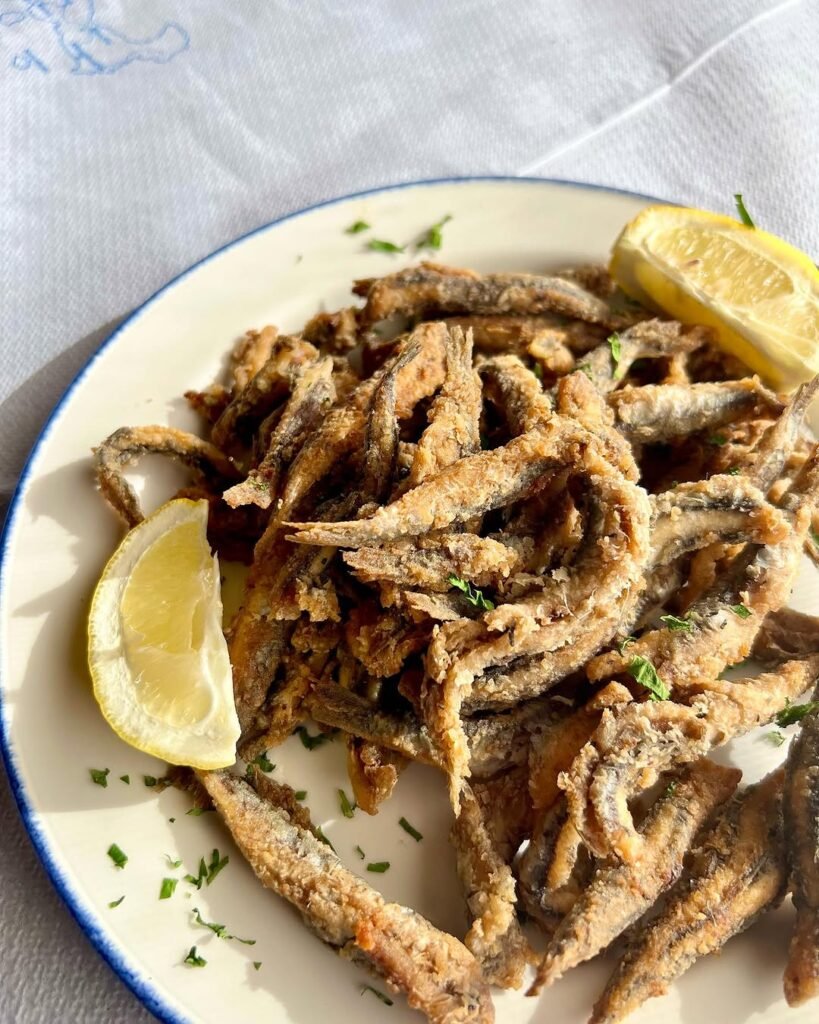
The preparation’s beautifully simple: they’re dusted with flour (sometimes with a touch of cornmeal for extra crunch) and fried in hot olive oil until golden. You’ll want to eat them whole, head and tail included, with a generous squeeze of lemon juice. Don’t miss the traditional side of skordalia (garlic dip) – it’s a match made in heaven.
During religious fasting periods, these little gems become the star of the show, offering a tasty alternative to meat while celebrating Crete’s rich maritime heritage.
Conclusion
These beloved Greek mezedes offer you more than just a meal – they’re your gateway to authentic Cretan culture and hospitality. As you’ve discovered, each dish tells a story of local traditions, fresh ingredients, and time-honored techniques. Whether you’re sharing kolokithokeftedes with friends or savoring dakos at a seaside taverna, you’ll find that Crete’s mezedes create lasting memories. Don’t rush – take time to explore these small plates that make Cretan dining so special.
The next time you visit this magnificent island, seek out these traditional treasures. The best mezedes are often found in the most unassuming places, where recipes have been perfected over generations. I hope you also enjoyed the personal tips scattered across this guide to Greek mezedes. So pull up a chair, pour a glass of local wine, and discover the true flavor of Crete, one delicious bite at a time.
Καλή όρεξη! (Kali orexi!)

